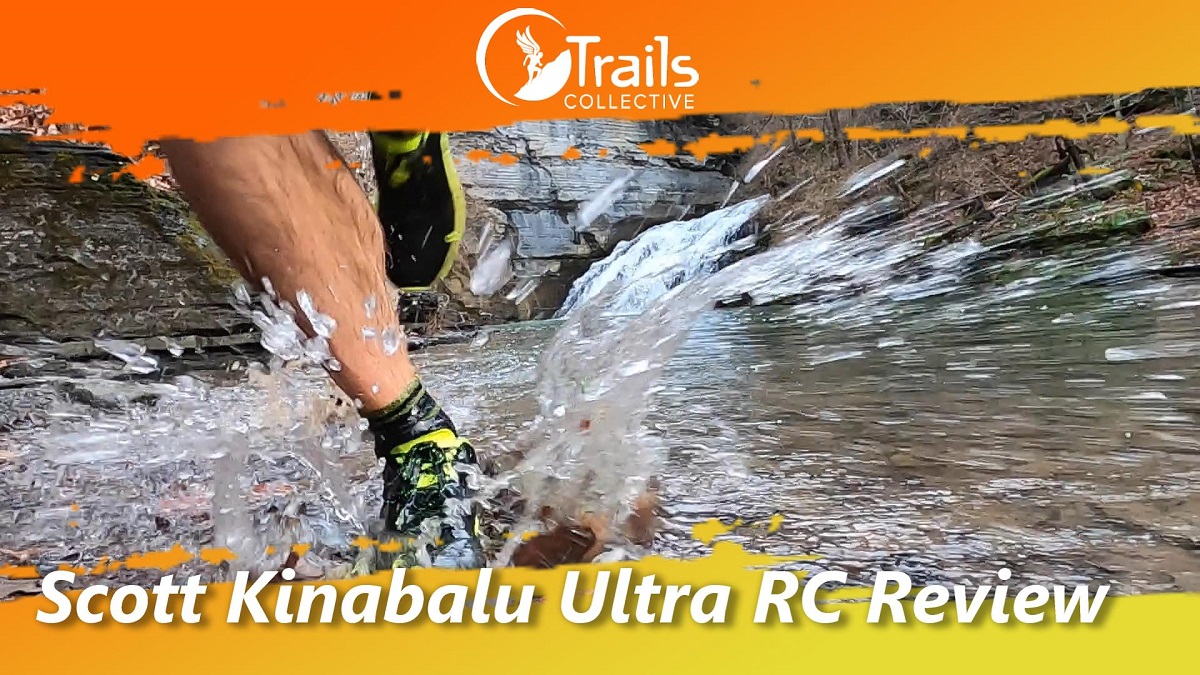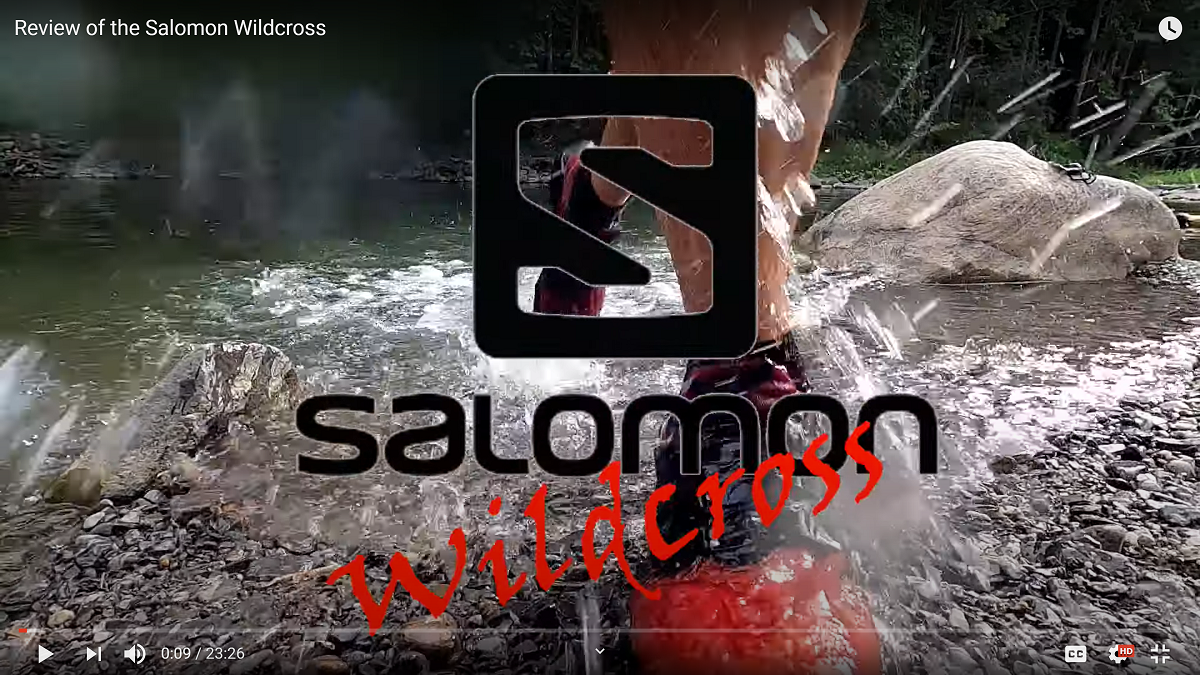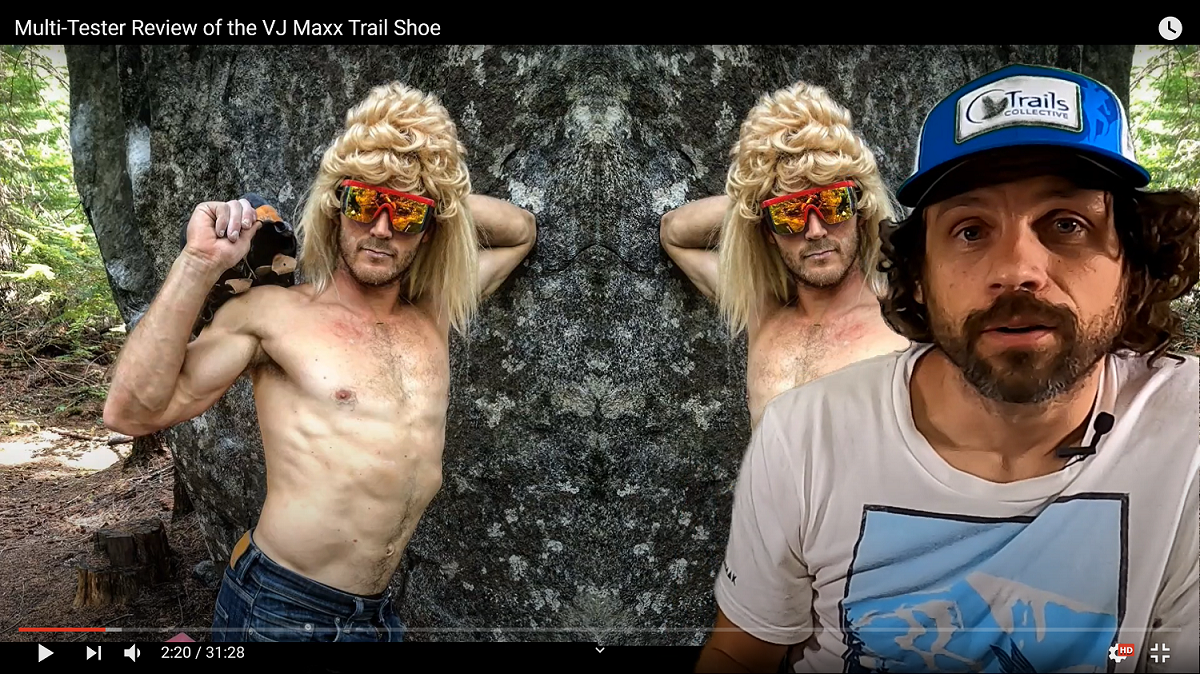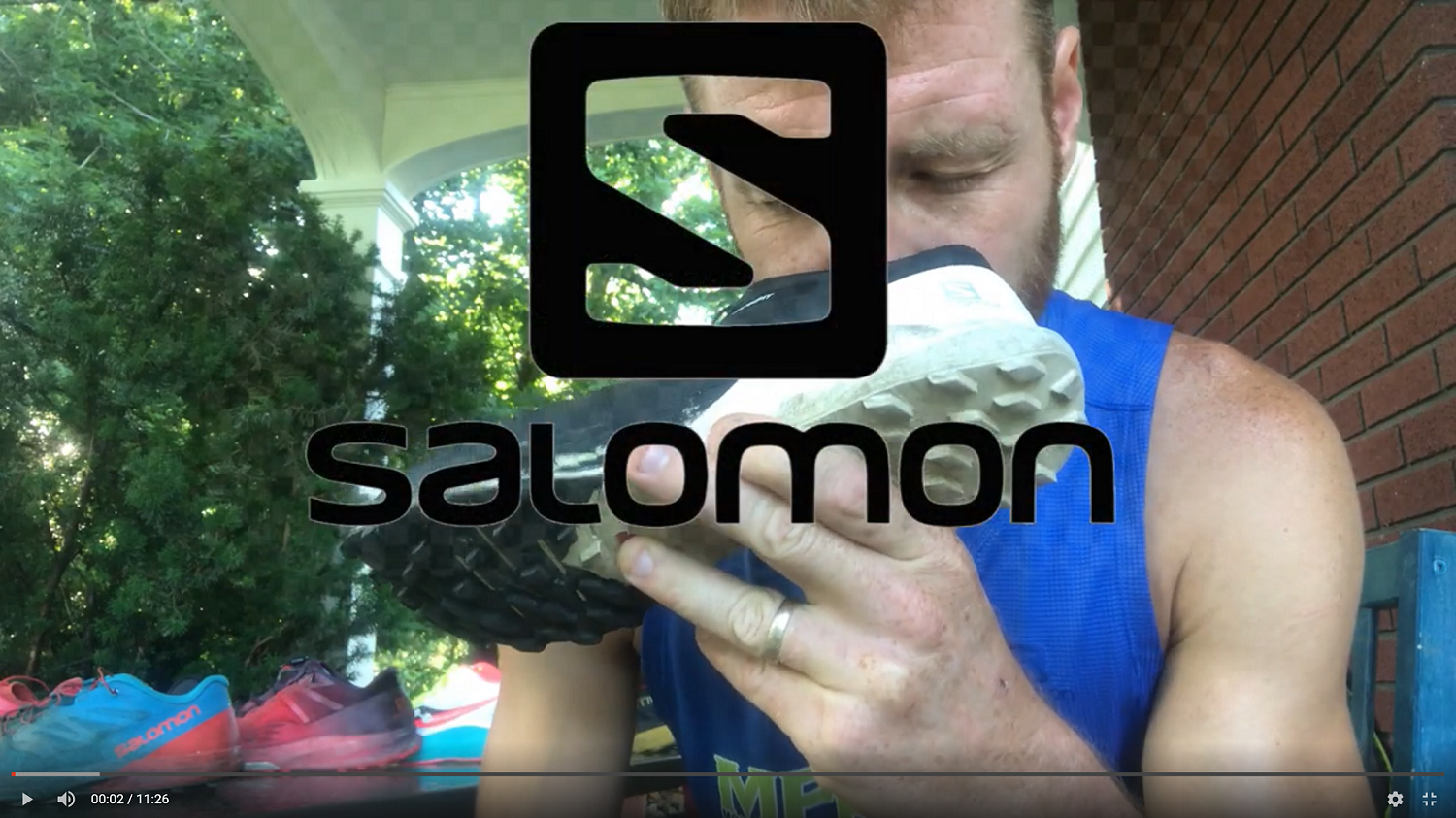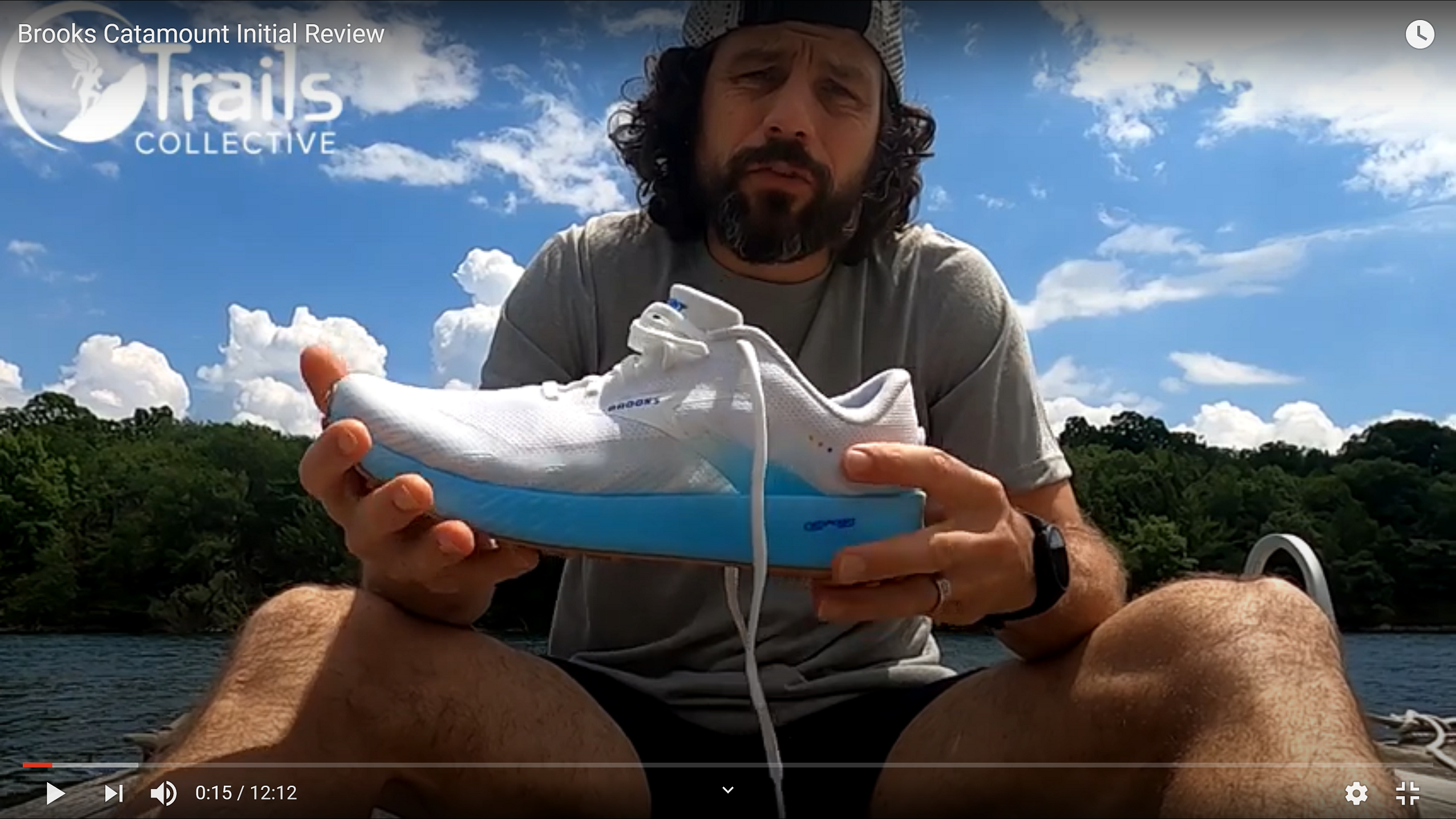Scott Kinabalu Ultra RC Review
With a great blend of responsive cushioning, rock plate, and smooth lugs, Scott’s Kinabalu Ultra RC is designed to run far and fast on semi-technical trails. I love the weight, design, and smooth underfoot feel. But are those upsides enough to justify the price-point, and have it pass muster on the terrain I’ll run it? Let’s dig in and find out.
Specs
Component Stack Heights
Insole: 4mm Heel, 3mm Forefoot
Lasting Estimate: 2mm
Midsole Estimate: 19mm
Base Rubber: 2mm
Lugs: 4mm
Combined Stack Heights: 31mm Heel, 23mm Forefoot
Drop / Differential: 8mm (*Note: The eRide regressive drop, i.e. 8mm at heel, 2mm at the toe, is one example of the actual difficulty of quantifying “drop”)
Weight: 9.5oz / 270g M9
Price: $160
Upper
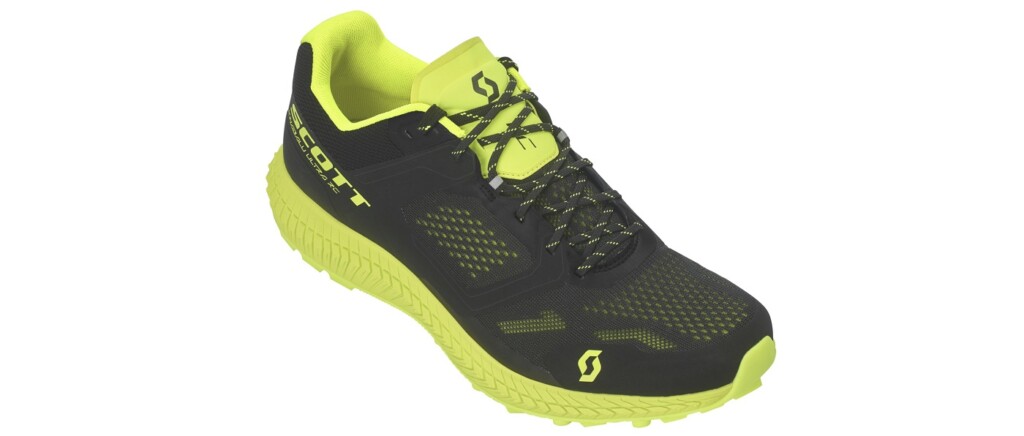
Materials and Design
The Kinabalu Ultra RC 2 makes use of an engineered mesh upper with TPU (thermoplastic polyurethene) overlays, and toe guard. The tongue is engineered breathable mesh at the base, with slight padding on the top. There are two loops through which to weave the flat laces to keep the tongue secure. A padded heel collar sits atop an embedded (feels like thermoplastic) heel cup.
Fit and Function
Although the last is in theory the same one used in Scott’s of old, and the insoles overlay exactly, the current toebox feels a bit roomier. Occasionally in prior Scott models, I’d get a bit of rub over my fifth toe. Not so anymore. The TPU overlays do a good job of wrapping and keeping the foot secure over the base even on off-cambered pitches. The engineered mesh breathes and drains well.
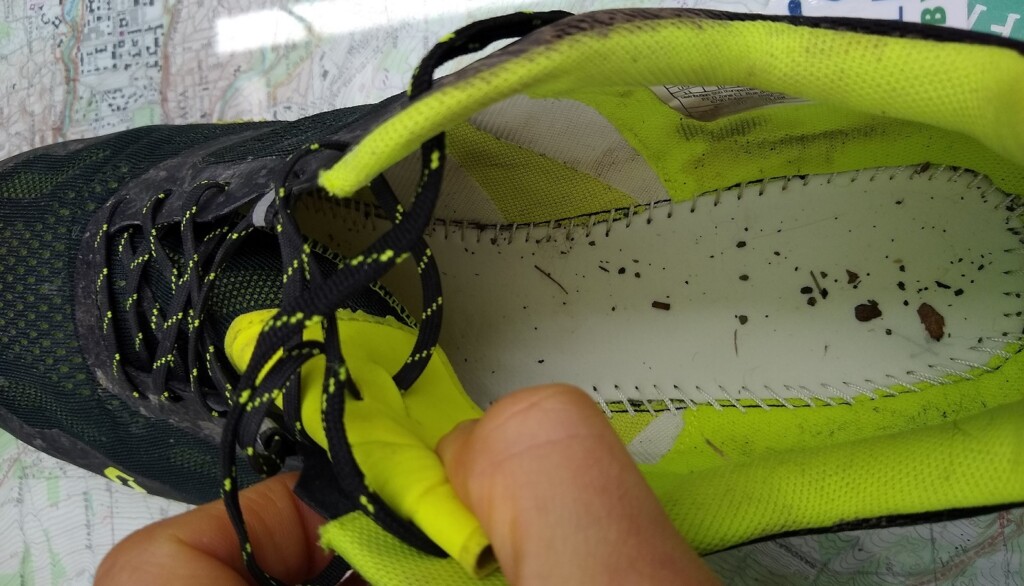
The tongue design works well with flat lace articulation and thin padding. What I think is a shortcoming is keeping it gusset-free. Whereas I think most trail shoes don’t need a rockguard, I think all trail shoes should have their tongue’s gusseted. While the shoe isn’t really intentioned for adverse conditions and technical trails, the design allows debris to slip into the shoe, noticeable in the photo above.
Midsole
Materials and Design
The Kinabalu Ultra RC is constructed with Kinetic Foam. Versus traditional EVA, kinetic foam is purported to have 14% more energy return, be 13% softer, and 21% lighter. Scott’s go-to chassis design is relative rocker-bottom called eRide, a rocker configuration intended to create a more effective, stable midstance, and extended landing zone. The midsole’s apex is mid-heal, with the rear spring allowing a heel striker to transition quickly to midfoot and midstance. That apex thickness extends forward 22% of the way, creating a consistent depth and stable midfoot. From there it drops down to 4mm, then 2mm to accelerate toe-off.
Sitting atop the midsole is an ESS (Enhanced Surface Strength) forefoot rockplate comprised of unexpanded vinyl. On top of that sits what appears to be an EVA strobel lasting with insole above which adds a bit of cushion, and does well in shedding water.
Feel and Function
Kinetic Foam and eRide
I’ve really liked Scott’s choice in midsole foam through the years. They’ve used some of the lightest, softest foams, with solid compression sets, and good ground feel. In the opening miles so to have I liked the Kinetic Foam.
While the eRide geometry feels really smooth and snappy underfoot, my body hasn’t reacted well to rocker-style bottoms. While I get the intention of stabilizing midstance and acceleration to toe-off, I feel like my midfoot sometimes feels jacked up by the configuration. I have a neutral, firm, and semi-collapsed midfoot. The eRide (or any rocker platform such as that used in Hoka, Pearl Izumi, Skechers) transfers force upward through my subtalar joint, increasing splaying force and strain on the connective tissue in the articulation of my tibia / fibula. I don’t think this is as much an issue for those with higher arched neutral feet where the added midfoot support fills the arch and complements the eRide mechanism. But, the eRide, and it’s ability to propel you forward is real and I do like the performance feel.
Rockplates?
If you’ve followed my reviews to date, you know I’m not a big fan of rock plates. I think they’re largely unnecessary in trail shoes with sufficient stack height. The ESS plate used in the Kinabalu Ultra RC is a good choice, second only to nylon plates used in models such as the Saucony Switchback 2. Paired with a soft midsole foam and flexible chassis, the Ultra RC’s use of the ESS plate ends up smoothly blended, as opposed to adding to overkill in models such as the Topo Ultraventure Pro. The combination handled technical pointed shots okay without any jabs felt underfoot.
Outsole
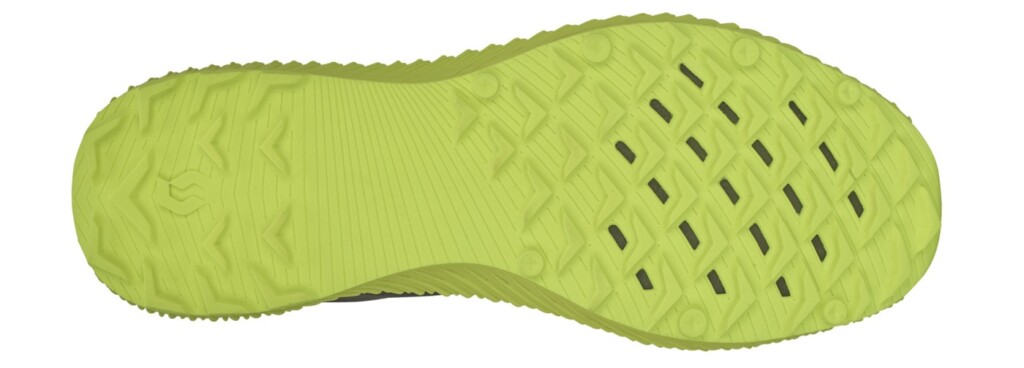
Materials and Design
Scott refers to the outsole on the Kinabalu Ultra RC as Hybrid Traction design and using a soft outsole rubber. The 4mm chevron shaped lugs are configured to be smooth over “man-made” trails and linear running. The lugs fan out slightly towards the toe for a bit more surface area when climbing. Circular lug pods are staggered around the perimeter, I’d guess with an intention for a slight multi-directional grab. The midfoot of the shoe is void of any lugs at all, possibly allowing the shoe to shed mud and weight.
Function and Durability
Paired with the Kinetic Foam, the soft outsole rubber and non-aggressive lug configuration aids in giving the Kinabalu Ultra RC a forgiving responsive ride. They grip well on dry non-technical terrain, or where there’s some grit to the mud, particularly in ascending. What they’re clearly not designed for is wet technical terrain or mud.
Although the upper does a good job of holding the foot over the base on cambered or pitched surfaces, the outsole lug design comes up short. In dry non-technical terrain, this isn’t too much of a problem. Throw a bit of mud in the equation though and their lugs cake with mud and have a difficult time biting well enough to stay on the trail. In one clip of the video review I slid out of the camera view, and kept going another 10 feet downhill before finding roots to grab. Even then I had a tough time getting back up the slope to the camera. The shortcoming is both in the lug design, as well as not having any traction whatsoever in the midfoot.
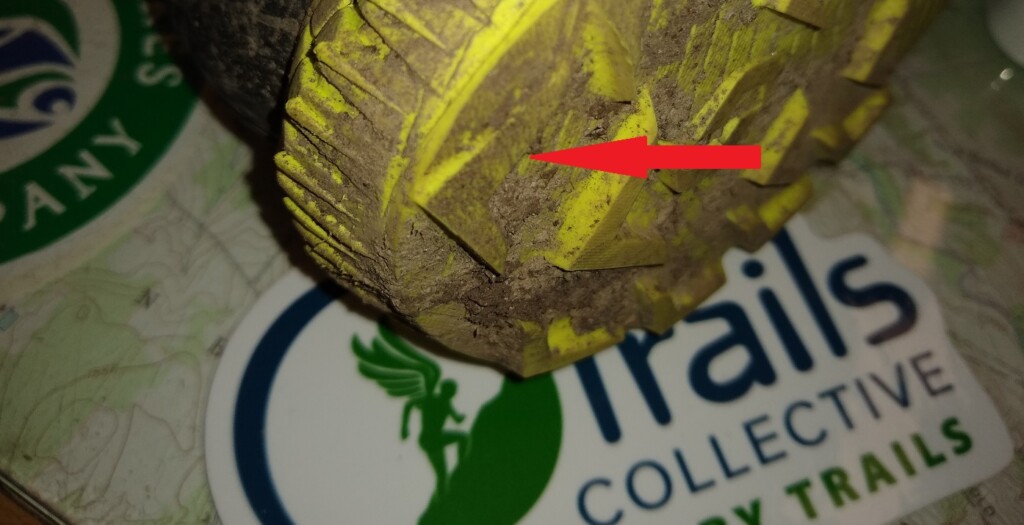
The softness of the outsole also leaves them coming up short on durability. Within 75 miles including mixed road, cinder, and technical trail running, I’ve nearly shaved off half of the rearmost lateral lug. So, although they’re designed for non-technical terrain, they also won’t hold up to paved miles.
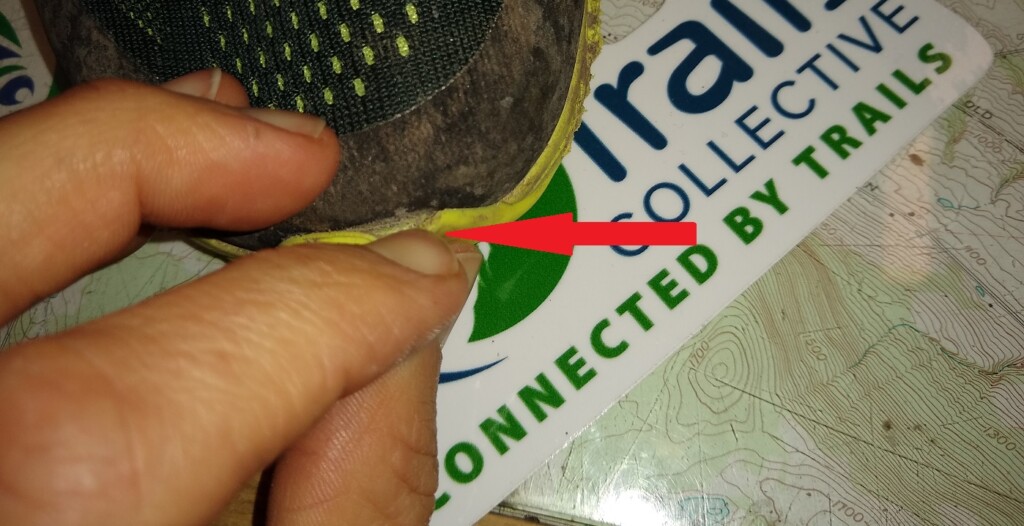
The outsole rubber is also beginning to delaminate from its junction with the toecap on one shoe. Outsole durability may not be the calling card here.
Comparisons
Baseline specs of Kinabalu Ultra RC (to compare against): 31mm Heel, 23mm Forefoot, Drop of 8mm, Lug Depth: 4mm, Weight: 270g / 9.5oz (M9), $160
Brooks Catamount:
Comparative Specs: 32mm Heel, 26mm Forefoot, Drop of 6mm, Lug Depth: 3mm, Weight: 267g / 9.4 oz (M9), $160
Subjective Comparison: The Catamount would be the Brooks ultra racing trail equivalent, coming in with similar specs and be one of the closest comparisons. The Catamount’s DNA flash has a bit better energy return than the Ultra RC’s Kinetic. Neither model offers too sticky of an outsole rubber compound, and, although they’re 1mm shallower, I’d give the functional edge to the Catamount secondary to the lug shape. While I feel the midfoot or arch wrap in the upper of the Catamount, the Ultra RC has a better midfoot hold and performs much better on cambered terrain. Although 2mm lower in heel to toe drop, and with similar stack height, the Catamount feels a bit more present in the hindfoot, whereas the Ultra RC’s eRide has a pickup of propulsion. I think the Ultra RC’s ESS and Catamount’s Ballistic Rock Shields are similarly matched and blended well into each model.
Salomon Sense Ultra Pro:
Comparative Specs: 34mm Heel, 26mm Forefoot, Drop of 8mm, Lug Depth: 5mm, 292g / 10.3 oz (M9), $150
Subjective Comparison: The Ultra Pro I don’t have in-hand for a side by side comparison. In those we’ve ordered for people though, I believe the Ultra Pro would have a firmer if not stiffer chassis out of the box. The Ultra RC would have a lighter, snappier feel, particularly with the eRide. Salomon’s Contagrip would offer stickier, more durable outsole rubber, with a more aggressive lug pattern.
Inov-8 TerraUltra G 270:
Comparative Specs: 24mm Heel / Forefoot, Drop of 0mm, Lug Depth: 4mm, Weight: 275g / 9.7 oz (M9), $150
Subjective Comparison: Side by side the G 270’s zero drop is prominent vs the Ultra RC’s drop of 8mm. In that regard the G 270 feels flat but consistent vs the Ultra RC’s eRide propulsion. The arch wrap / support is a bit more prominent in the Ultra RC. There’s a bit more bounce to the Ultra RC midsole, though I do like the firm ground feel of the G 270. Both have enough cushion underfoot to run long, with a slight protective edge going to the Ultra RC secondary to the ESS plate. The G 270 is far stickier and more durable than the Ultra RC.
Hoka Torrent
Comparative Specs: 32mm Heel / 28mm Forefoot
Subjective Comparison: Although Hoka uses a Metarocker, it doesn’t feel nearly as pronounced as what Scott does with eRide. Definitely more fall away / propulsion in Scott. Outsole rubber not remarkably different though the Torrent’s lugs are a bit deeper and more functional in configuration for #BeastCoast Terrain. I can feel the Torren’t increased stack height, but the Kinabalu Ultra RC feels lighter, softer, snappier. Ultra RC has better wrap on my midfoot. Toeboxes are similar.
Skechers GORun Speed Trail:
Comparative Specs: 28mm Heel / 24mm Forefoot, Drop of 4mm, Lug Depth: 3mm, Weight: 232g / 8.2 oz (M9)
Subjective Comparison: The Speed Trail outsole rubber is stickier and a bit more durable and lugs versatile. Both midsole compounds have good energy return and responsivity. You can feel the Skechers M Strike rocker, but further forward, and significantly different than the eRide mobilization. The Speed Trail nylon H and rockplate is firmer than the Ultra RC. Side by side with the Ultra RC, the Speed Trail’s 4mm drop though leaves the Ultra RC feeling more effective in gait propulsion. Both wrap the midfoot well with a bit more volume in the Ultra RC. Both feel light and race-ready, however the Speed Trail feels too thin underfoot for most’s ultra comfort.
Takeaway
“BestCoast”?
There are many shoes which aren’t necessarily good or bad, it just takes a bit to flush out their strengths, weaknesses, and best fit. Scott pegs the Kinabalu Ultra RC as a model suited for man-made trail terrain and linear running over long distances. For that niche I think they’ve created a model with a smooth underfoot transition, enough cushion to run long, a bit of grab for non to mildly technical terrain, and just enough protection to take some shots. To boot, I think it has a great look. For the person with of bit of extra cash to burn looking for an excellent choice of racing Western States, check out the Kinabalu Ultra RC as it’ll be a great fit.
“BeastCoast”?
However, as a package, I think it falls short of being the best fit for the technicality of the #BeastCoast and most wallets. The lack of outsole durability stymies its ability to work as a road to trail model, even though it feels good in the moment. The lack of lug depth and grab minimizes its ability to handle wet and muddy conditions on trail with any technicality. And the price point of $160 will drive those shortcomings home when compared to a slate of more durable or capable competitors.


